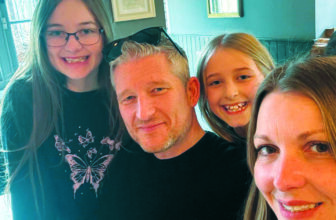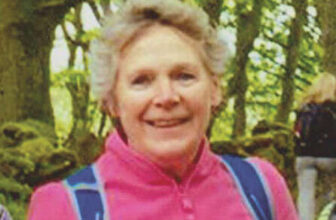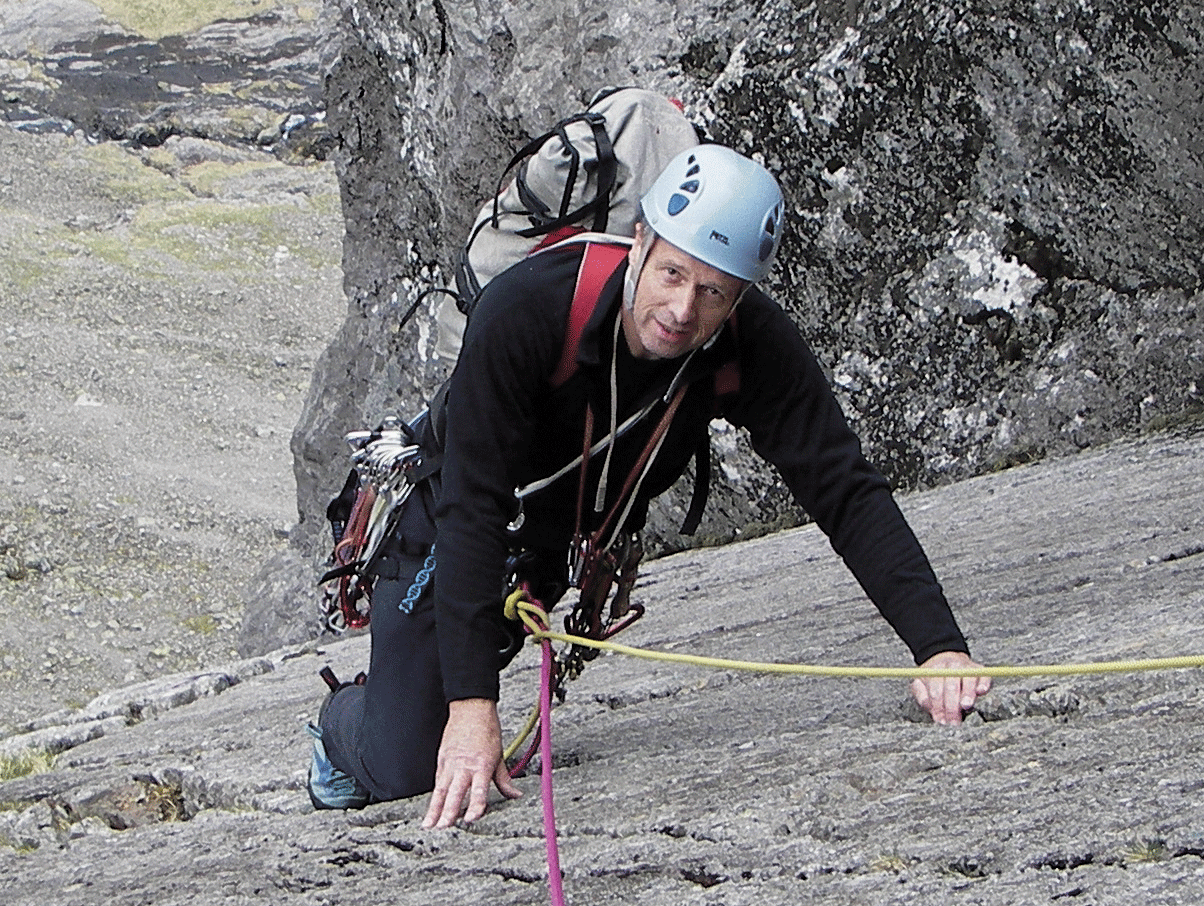
Peter Bavestock, retired businessman and amateur climber
I guess I started climbing later in life than perhaps most people do nowadays. Today, there are numerous indoor climbing walls and every outdoor sports facility seems to have a wall. If you are in the scouts, guides, ATC, army cadets, university or similar, you will have had the opportunity to try climbing.
When I was young my family moved around quite a lot, mainly through my dad’s work. We lived in Ealing, Central London, Sevenoaks, Borough Green, Nuneaton and finally ended up in Wonersh in 1968, when I was twenty-one.
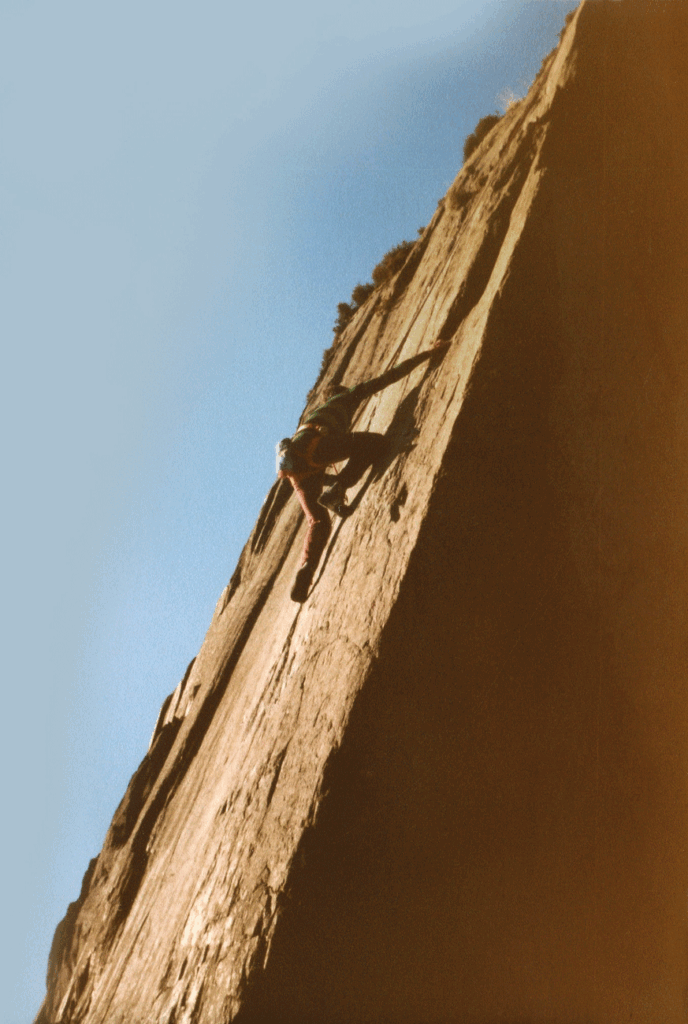
Through various friends and acquaintances, I met a guy called Pete West. He worked in sales, but outside of work he sang and played guitar in pubs and clubs, often with his mate Mike Cheeseman. I had no idea Pete went rock climbing until one evening I went into The White Horse in Rogate, near Petersfield, where they were playing. They were both singing but only Mike was playing the guitar because Pete had both hands fully bandaged. He had evidently been climbing at Bosigran, in Cornwall, a very popular climbing area on the sea cliffs. He had fallen and in trying to save himself, had tried to grab the rock and taken the ends of his fingers off!

Despite his injuries, on several occasions afterwards he tried to persuade me to go climbing. I loved the outdoors and was a keen walker, along with my parents, but for a while I declined. However, he persisted and eventually sometime in 1970, we jumped into his car one Sunday morning and made our way to Harrisons Rocks, near Groombridge in Kent.
Harrisons is a sandstone outcrop, common in the Kent/Sussex area. However, Harrisons was the most popular and always very busy on good days at the weekend, being the only place in the south east to go climbing. All the climbs there are top roped, (where the rope goes through a sling and carabiner at the top of the climb and a belayer stands at the bottom, taking rope in for the climber) and can be technically quite difficult because of the nature of the rock, often slippery with rounded holds.
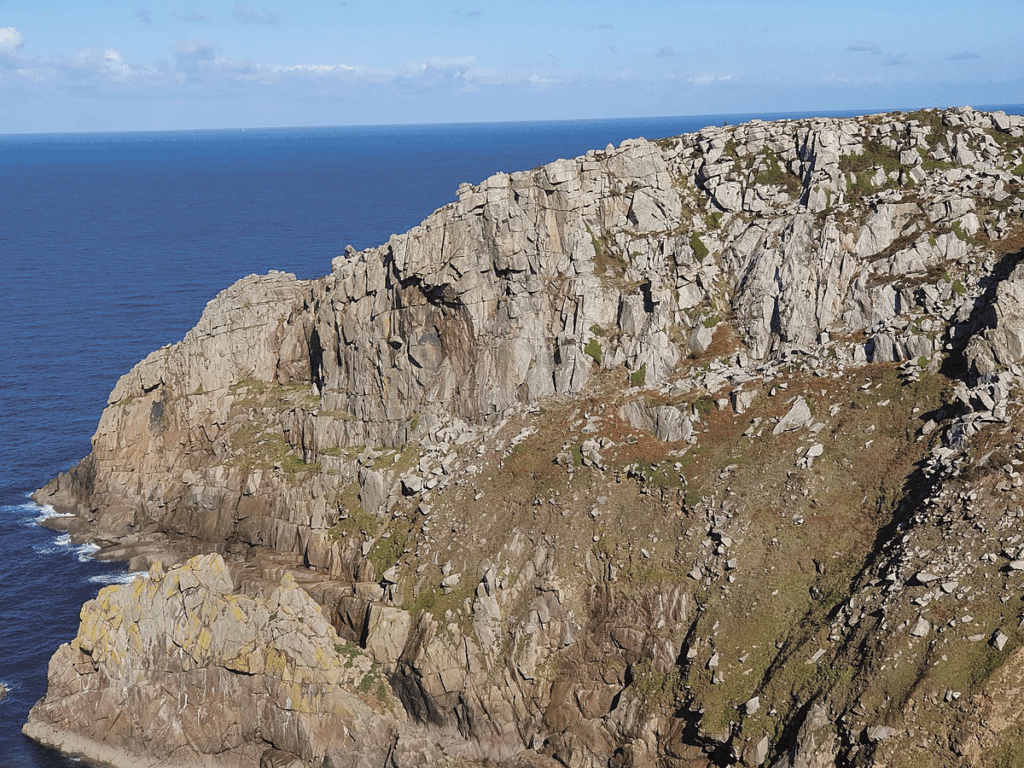
We met up with some guys from the Woking and Guildford area who Pete knew. We did our first climb and I was immediately bitten by the ‘climbing bug’. Little did I know that 55 years later, some of those guys would still be my closest friends.
Over the next couple of years I regularly went to Harrisons at the weekend, developing my climbing technique and skills, eventually taking my first trip to North Wales for a real climbing weekend. We stayed in the Climbers Club hut, Helyg, in the Ogwyn valley. On Saturday we walked from the hut to the heather terrace on Tryfan, about an hour’s walk. From there we climbed First Pinnacle Rib climb, a 560ft VD, (very difficult). This took us to the summit of Tryfan, just over 3,000ft. I was ‘hooked’ again – it was a fantastic day.
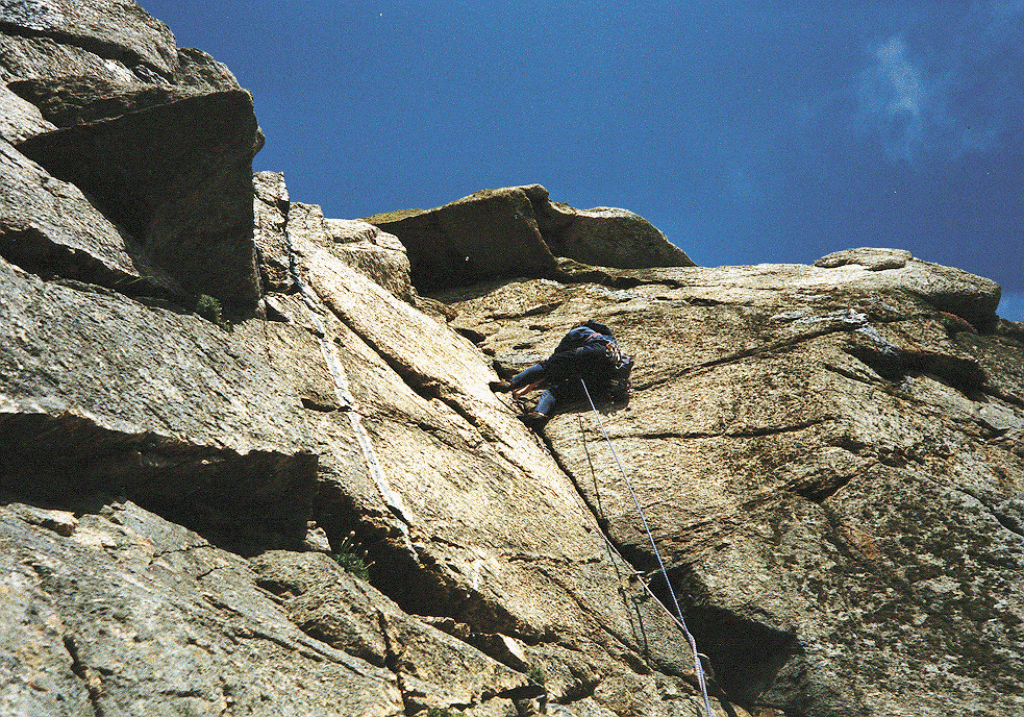
Further visits followed to Snowdonia, Cornwall, Lake District, the Dorset coast and Scotland. I climbed for as many weekends as I could afford, travelling in unreliable cars, but with great people. I became a member of The North Wales Mountaineering Club and The Climbers Club. This gave members the right to stay in their huts in various locations in the country.
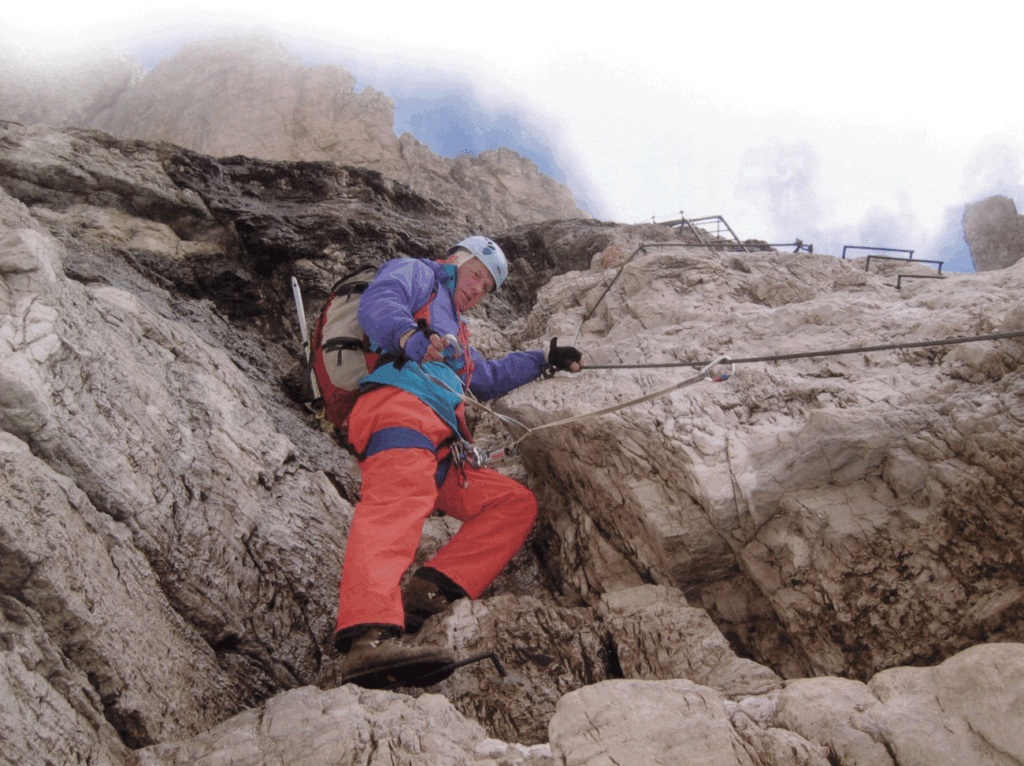
Staying in huts can be very interesting, especially when there are mixed groups and individuals. On one occasion we were staying in a hut with a large mixed dormitory, along with a group from the Southwest. The bunks were three high. One of their group, a female was a rather morose individual. During the night a guy on the top bunk had to answer a call of nature and this particular girl was on the bunk below him. On his way down he knocked her glass of water spilling some of it over her. There was some angry whispering while she sorted herself out but unfortunately, on the guy’s return he did the same thing again. Chaos ensued with much name-calling and swearing from the grumpy female! By this time the whole dormitory had awoken to a very unhappy atmosphere. He wasn’t particularly popular with any of his roommates that night!
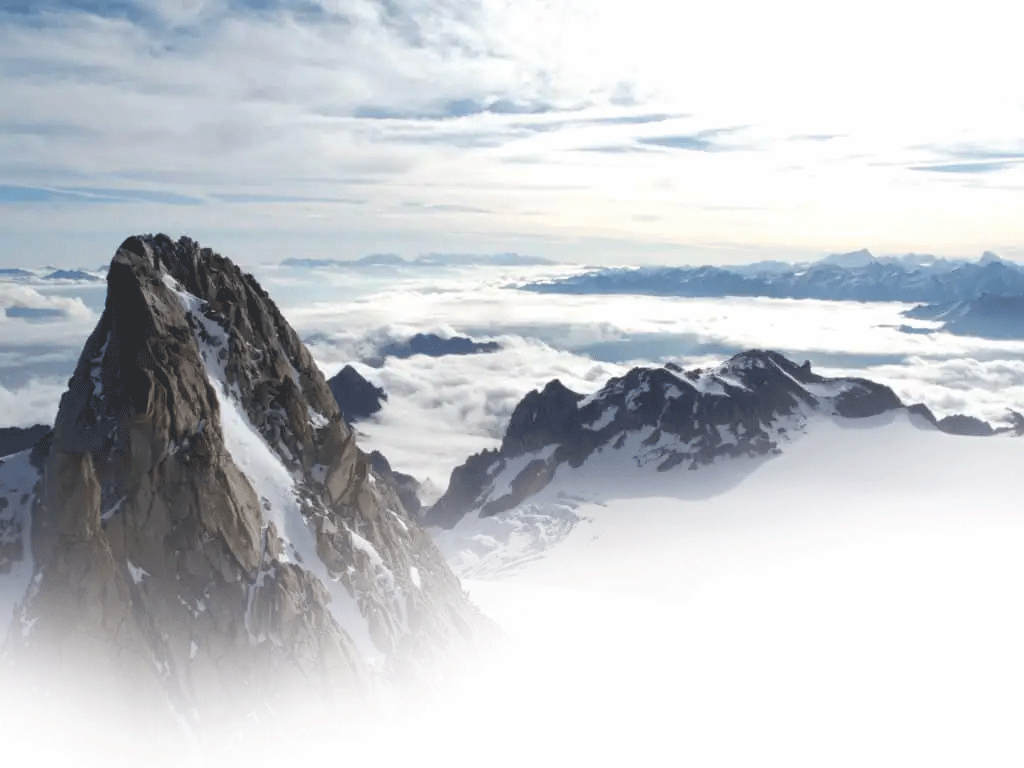
Snowdonia was the place we visited most and still do. I’ve climbed many routes there of varying difficulty, regularly at one time to the grade of HVS (hard very severe) and occasionally extreme. I also ventured out to the climbs at Tremadoc, the big cliffs opposite Eric’s café. Eric Jones was the first British climber to solo the north face of the Eiger, a lovely man and always happy to chat. Gogarth, on Anglesey, was a place we also climbed. This is quite serious as you have to abseil in and the only way out is to climb. We have also soloed many of the easier scramble type routes in the mountains over the years.
Our trips to Cornwall were mainly to The Count House, an old copper mine counting house, owned by the Climbers Club and sitting on top of the main sea crag of Bosigran. There are some amazing climbs there, many starting from a footpath already 100ft or more above the sea of the Atlantic Ocean.
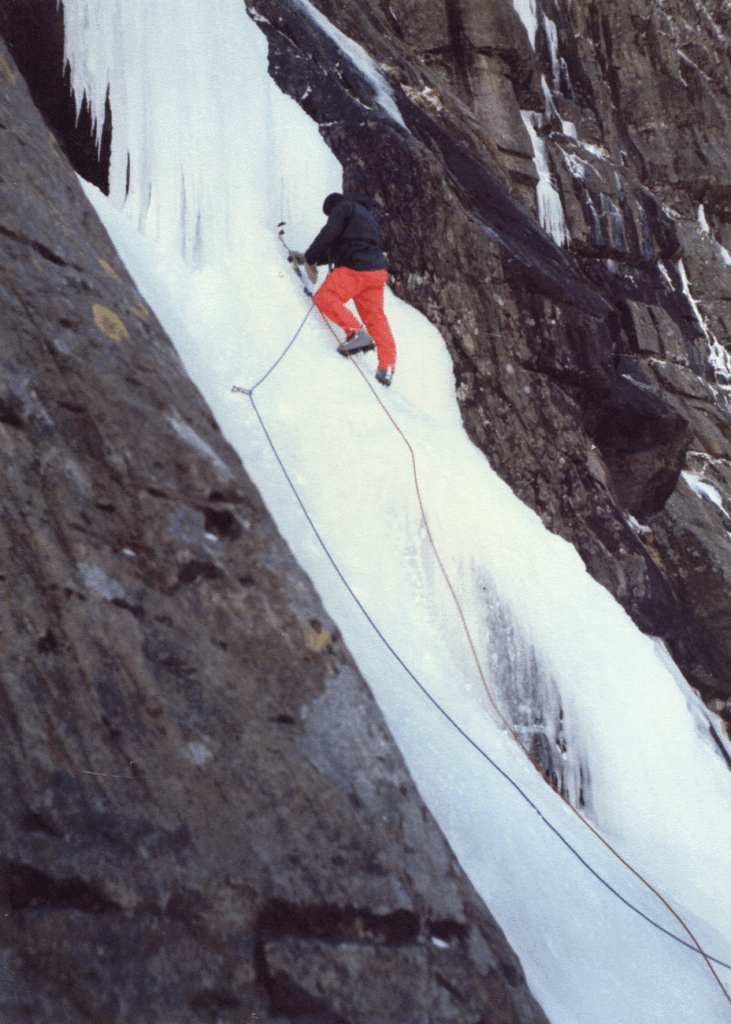
One of my rude awakenings came in Cornwall on the cliffs at Bosigran during a climb called Anvil Chorus, which has a reputation for falls and injuries. The climb is 185ft high from the footpath, graded VS (very severe). We were climbing as a rope of three – myself, John Mason and Fran, a girl who often climbed with us. The critical second pitch in the guidebook reads: – 35ft, Climb the vertical double crack splitting the smooth wall, it can be laybacked or jammed. Care is necessary as owing to the angle of the rock the left foot tends to slide away.
I decided to climb it as a layback (a method of climbing a crack in rock by leaning back and pulling with the hands on one face, with the feet against the other face). It was very strenuous, a combination of strength and technique, but I managed to get a good piece of protection (personal protective equipment) in at the halfway point. When I reached the top of the pitch, I had used so much energy that my hands could no longer hold on and just let go. Fortunately, the piece of protection held, but I still fell the full length of the pitch, plus a bit of rope stretch the whole 35ft. Because the pitch overhangs slightly in one direction, I ended up in free air, 3 or 4ft out from the stance. It was a heart stopping moment, looking down over 200ft into the Atlantic Ocean. I managed to swing and get myself back on the stance. My second, Fran, who was belaying, (this was the time before belay devices, and the rope was wrapped around the belayer’s body and around their arm) sadly ended up with quite severe rope burns to her arm. I was successful on my second attempt once we had rested and gathered our thoughts and given Fran a jacket.
In 1972 I joined the Austrian Alpine Club. This gave me reciprocal rights to the Swiss mountaineering club huts and I made my first visit to the Alps. I used my 2 week holiday allowance from work and travelled by train with my friend Stevie and masses of kit, including camping gear. We made it to Zermatt. At the campsite, we met up with other friends who’d taken a different route, about 10 of us in all from Guildford/Woking area. My first climb with Stevie, mainly for training and acclimatisation, was the Mettelhorn. It’s 11,100ft, a very straightforward, one day climb.
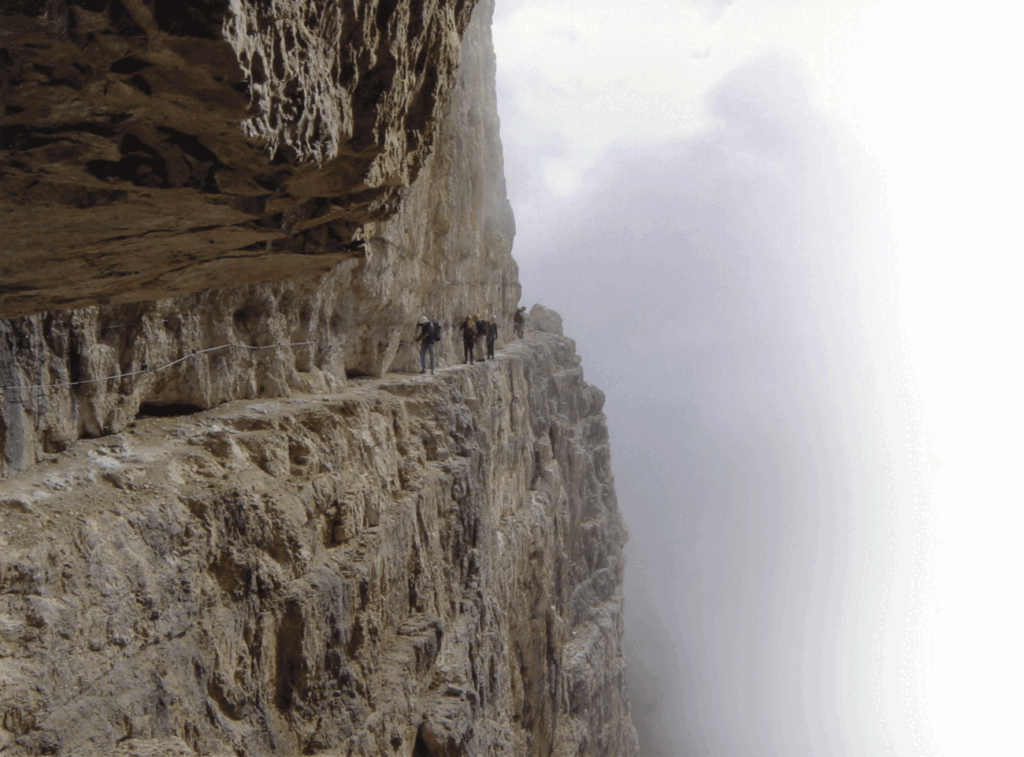
In the following days, in varying groups we did the Zinalrothorn, Aeschorn, Allalinhorn and the Taschhorn, all over 10,000ft.
Pete Lewer, one of our party, and I set off to do the Rimpfishhorn, 13,700ft, but to avoid paying hut fees we decided to bivouac (make camp). We got above the snowline and found a suitable place under a rock overhang, but still with some snow and ice under us. The next morning we were up before daybreak, enjoyed a brew and were off. We summitted the mountain successfully by about 9.30 am, had a rest, some food and drink and then made our way down. On the way down we came across a steeply sloping snowfield which looked quite easy, so we unroped. I put the rope in my sack and we set off down. We were traversing the slope going down and I was in the lead. About halfway down, just under the relatively soft snow, there was some sheet ice. My crampons lost grip and away I went, hurtling towards the bergschrund, the big gap between the face we were on and the glacier. I managed to arrest myself with my ice axe but had travelled some distance. My left hand had gripped the shaft of the axe against the ice and snow but I had taken all the skin off the back of my hand and fingers. So, we roped up again and made our way down to the glacier and eventually to the campsite in Zermatt, where I got some first aid, a little worse for wear! The main thing I learned from this trip was that 2 weeks is not enough time to go to the alps, acclimatise and get some good climbing in.
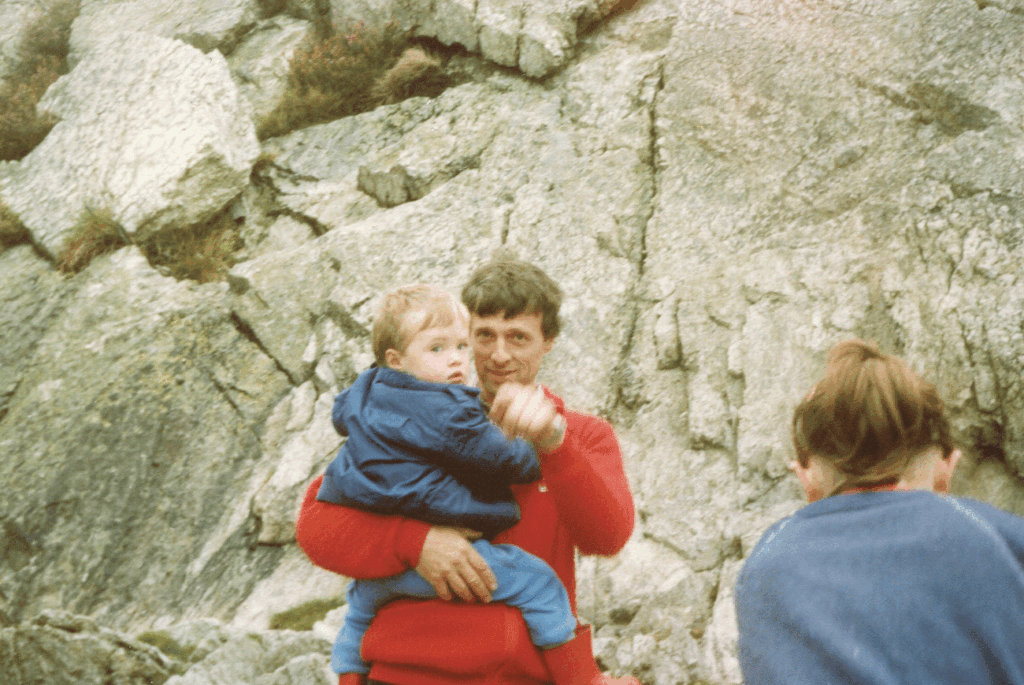
In 1973, another trip to the Alps beckoned. I asked work if I could take a 4 week holiday, 2 of which would be unpaid. However they refused my request, so I left my job and went anyway.
I travelled with John Mason, a schoolteacher at Woking Grammar and had 6 weeks holiday and a reliable car. We drove to Arolla, a small village at the foot of the Bas Glacier D’Arolla, where we were able to wild camp free of charge. We spent 2 or 3 days walking and adventuring on the glacier, then started off very early one morning and climbed the Aig de la Tsa. At 12,000ft, the highest in this range. There was a party ahead of us on the climb who kept shouting down to us, we had no idea what they were saying or whether or not it was important! it was a great climb and a great day out.
A couple of days later we drove round to the Chamonix valley, meeting 2 other friends and camping at Bernard Ravanel’s camp site in Argentiere. We spent a week climbing and adventuring in the area, but then bad weather came in. The 4 of us decided to travel down to the south of France for a few days to let the weather improve. We stayed on the beach in Casis for a few days, experiencing a very different vibe from the mountains. After a few days with favourable weather reports, we made our way back to Argentiere.
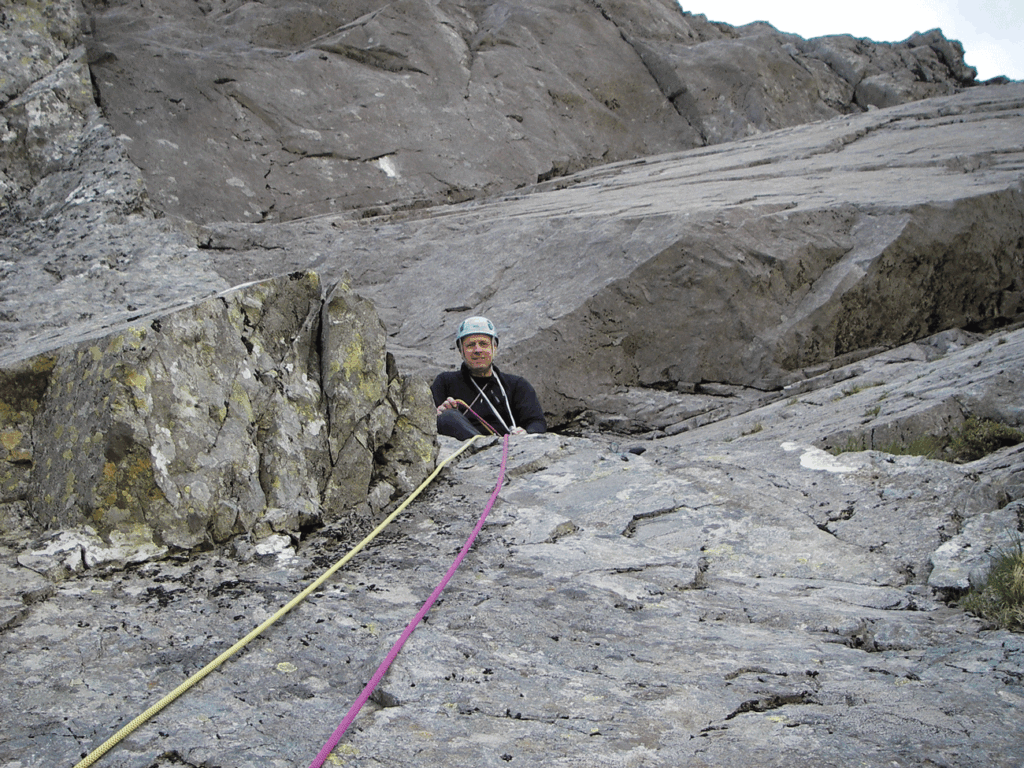
More climbing, but the highlight was the Aig du Tour, a fabulous twin peaked mountain off the Glacier Aig du Tour. This involved a big walk up to the Refuge Albert hut, where we spent the night. A very early start followed, crossing the glacier and then climbing the main peak which consisted of steep rock, snow and ice on all sides. It was quite a demanding climb, the weather was excellent and we had great views over the alps to Mont Blanc. We then made our way over to the lower peak and eventually back down to the valley.
I’d nearly run out of money though and had spent my train fare home so decided to hitch back to Calais, where I had enough to pay for my ferry and train fare back to Guildford. From there I had to walk home to Wonersh! Probably another story beckons about this trip!
To my delight, once I was back home, I received a phone call from work offering me my job back, which was quite handy!
1974 was a big year. Firstly, and most importantly, I met my future wife, Janet. A climbing friend Neil, had recently married his wife Sarah and they had a housewarming party at Addison Road, Guildford. Sarah worked with Janet and that’s how we first met. Secondly and almost as important, I got a new job with an ‘all expenses-paid’ company car, (yay!) and free travel for my climbing trips.
Janet was now introduced to climbing, which often involved her sitting in a car at the bottom of a crag while a group of us went climbing. What a long-suffering wife she was. We did however, get a trip together to Zermatt, camping with my friend Peter Lewer, his wife Liz and some of his family, where we climbed together.
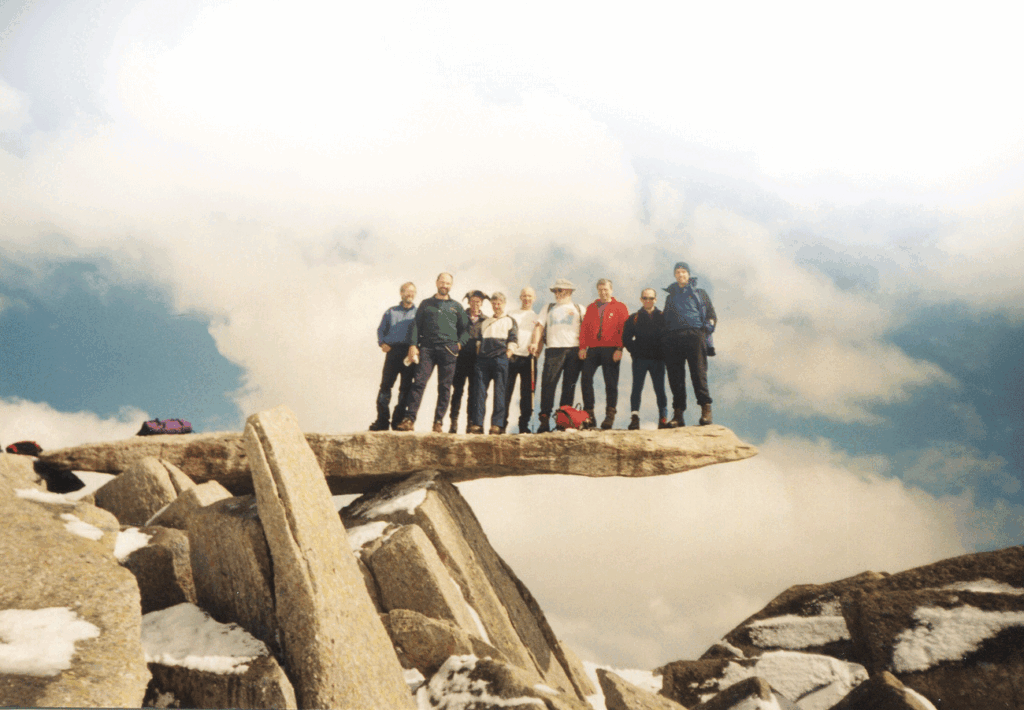
The climbing continued through the following years, introducing our 3 children, David, Tom and Emily, to the sport.
While the following years were spent on family things, working and renovating houses, I still managed to go on some climbing trips. I visited Wales and Cornwall as aften as I could. Later we organised rock climbing trips to Spain, France, Majorca and Kalymnos.
In 2004, a group of us, including our son David, flew out to Venice, jumped on a train and bus to Madonna di Campiglio, then the Grosta cable car up onto the Brenta. Here, we had 5 amazing days on the Via Ferratas, in the Italian Dolomites.
In about 2008, 4 of us took a trip to Scotland to climb one of the major rock climbs in the country, Centurian, a 700ft HVS (Hard Very Severe) on the North face of Ben Nevis, first climbed by Don Whillans and RO Downes, much to the chagrin of the Scots, who had unsuccessfully attempted the climb on several occasions. Colin and I climbed as a rope of 2, doing alternate leads, an amazing and demanding climb, and then a fantastic descent down a snow gulley, a big walk down and then a welcome few pints of heavy in the pub at Roybridge.
I still go climbing maybe 2 or 3 times a year. I was in Snowdonia with my lifelong mates at the end of October for a few days. Nothing else matters when you are out in the mountains. Mountains are beautiful and it feels joyful to be amidst them. It’s good for your health – Climbing is superb for fitness. It requires strength, power and endurance and it’s a great way to make friends for life.



